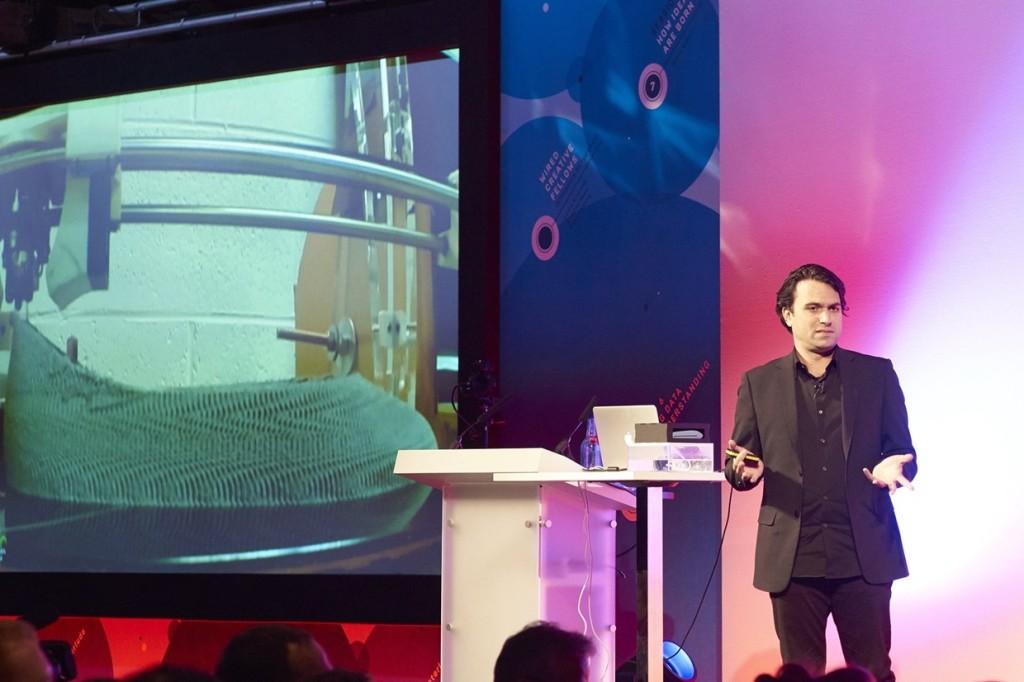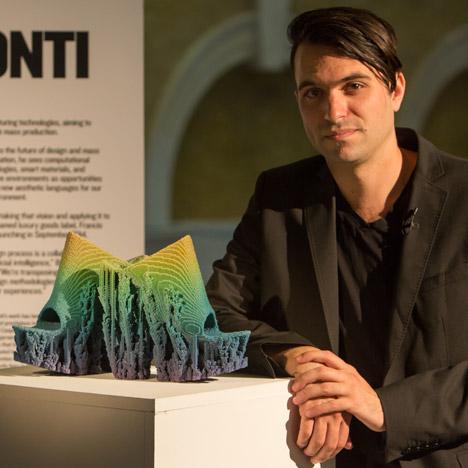Tectonic shifts in technology are not without their growing pains. 3D printing seems to have made it through its childhood, growing at an impressive rate and giving everyone sky high hopes for its potential, but its awkward pre-teen years are making it more difficult to remember the beauty that we have seen in its future.
In a June interview with de zeen magazine, Francis Bitonti warned:
“The industry is choking off its own revolution. They’ve got to open up. It’s not that they need to open up all of their IP, but it’s a lot of things. [You’re] seeing a lot of tinker toys because they are treating it like a copy machine. I think they need to change their mind and understand that it’s a manufacturing technology…It’s like let’s just stop people from doing the best thing that this thing can do, and in a lot of ways that’s happening.”
 Bitonti is no armchair critic either. The New York based designer is well known for his contributions to pushing the frontiers of 3D print technology through his creations from the world’s first metal 3D printed table to Dita von Teese’s Fibonacci 3D printed dress. For his latest effort to share his ideas, he took to the stage at the WIRED 2015 event held October 15-16 as one of 45 speakers bringing perspectives from across the spectrum.
Bitonti is no armchair critic either. The New York based designer is well known for his contributions to pushing the frontiers of 3D print technology through his creations from the world’s first metal 3D printed table to Dita von Teese’s Fibonacci 3D printed dress. For his latest effort to share his ideas, he took to the stage at the WIRED 2015 event held October 15-16 as one of 45 speakers bringing perspectives from across the spectrum.
 In order to truly unlock the potential of 3D printing, Bitonti argues that a change in the way of thinking is needed. Rather than seeing these machines as a conduit for delivery, there has to be a recognition of their existence as tools. Mastery of a tool truly comes when the user is able to intentionally misuse it. Amazing works can be produced when tools are used wrong, followed by a series of fresh innovations built on the tool’s newly recognized potential. Bitonti believes makers are being constrained by the stagnant rules of 3D print making and that an entirely new way of thinking is needed in order to bring the technology back into relevance.
In order to truly unlock the potential of 3D printing, Bitonti argues that a change in the way of thinking is needed. Rather than seeing these machines as a conduit for delivery, there has to be a recognition of their existence as tools. Mastery of a tool truly comes when the user is able to intentionally misuse it. Amazing works can be produced when tools are used wrong, followed by a series of fresh innovations built on the tool’s newly recognized potential. Bitonti believes makers are being constrained by the stagnant rules of 3D print making and that an entirely new way of thinking is needed in order to bring the technology back into relevance.
“I don’t want to call it the next industrial revolution,” he said. “We should be talking about how we’re creating design tools for the information age…The key thing is that these tools are changing the way we think about form. The objects we create are a way of negotiating our traditional ideas bout production, and finding completely new kinds of structures.”
Bitonti firmly believes that the key to such re-visioning lies in making changes to design education, so as to incorporate a greater disciplinary freedom with less focus on the re-creation of specific outcomes and more on the process of bringing together new ideas. This is not unlike the paradigm shift outlined by Thomas Kuhn in his History of Scientific Revolutions.
 This is not the first time that such calls for change have been made. For example, in 2012 I published a piece in the book Meanings of Design in which I suggested that design education needs to not just think about different things (i.e., new technologies, challenges, or materials) but actually think differently. Unfortunately, as education succumbs to pressures to be focused on career preparation, it forever remains behind the curve. With Bitonti’s call for redesign, the focus in education would be bringing together previously disparate information in an effort to raise thinking to beyond the latest level of technology, such that they pull each other forward.
This is not the first time that such calls for change have been made. For example, in 2012 I published a piece in the book Meanings of Design in which I suggested that design education needs to not just think about different things (i.e., new technologies, challenges, or materials) but actually think differently. Unfortunately, as education succumbs to pressures to be focused on career preparation, it forever remains behind the curve. With Bitonti’s call for redesign, the focus in education would be bringing together previously disparate information in an effort to raise thinking to beyond the latest level of technology, such that they pull each other forward.
Design doesn’t build the bridge to the future, it is the future. And it’s about time we start moving forward. Discuss this story in the Bitonti Forum thread on 3DPB.com.
[Source/Images: Wired]
Subscribe to Our Email Newsletter
Stay up-to-date on all the latest news from the 3D printing industry and receive information and offers from third party vendors.
Print Services
Upload your 3D Models and get them printed quickly and efficiently.
You May Also Like
HP and Firestorm Labs Form Partnership to Use Multi Jet Fusion 3D Printers in Deployable Factories
HP Inc., maker of a range of additive manufacturing (AM) solutions including the Multi Jet Fusion (MJF) ecosystem, has announced a partnership with Firestorm Labs, a developer of containerized, deployable...
3D Printing News Briefs, July 2, 2025: Copper Alloys, Defense Manufacturing, & More
We’re starting off with metals in today’s 3D Printing News Briefs, as Farsoon has unveiled a large-scale AM solution for copper alloys, and Meltio used its wire-laser metal solution to...
Reinventing Reindustrialization: Why NAVWAR Project Manager Spencer Koroly Invented a Made-in-America 3D Printer
It has become virtually impossible to regularly follow additive manufacturing (AM) industry news and not stumble across the term “defense industrial base” (DIB), a concept encompassing all the many diverse...
U.S. Navy Lab Uses 3D Printing to Reduce Tooling Lead Time By Over 90%
The F-35 Lightning II Joint Program Office (JPO), responsible for life-cycle management of the key fifth-generation joint strike fighter (JSF) system used by the U.S., its allies, and its partners,...

































